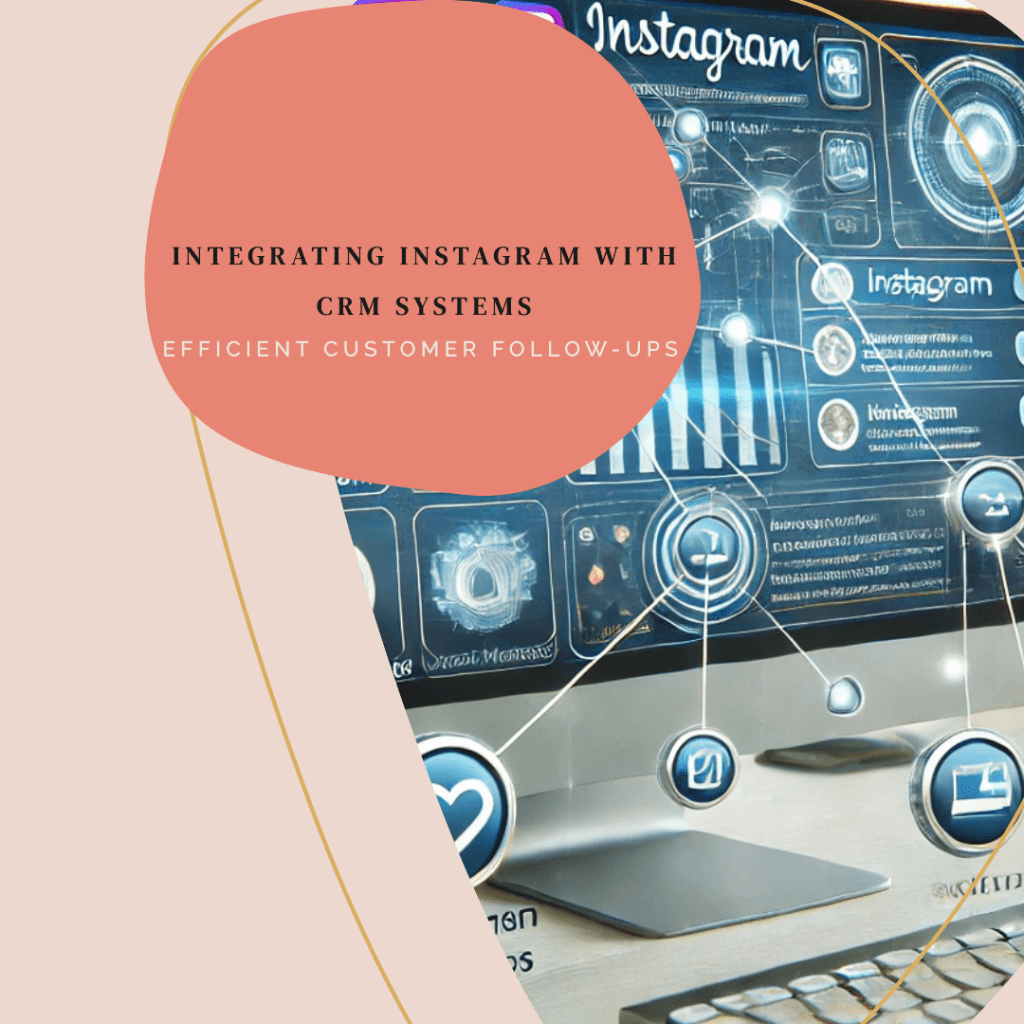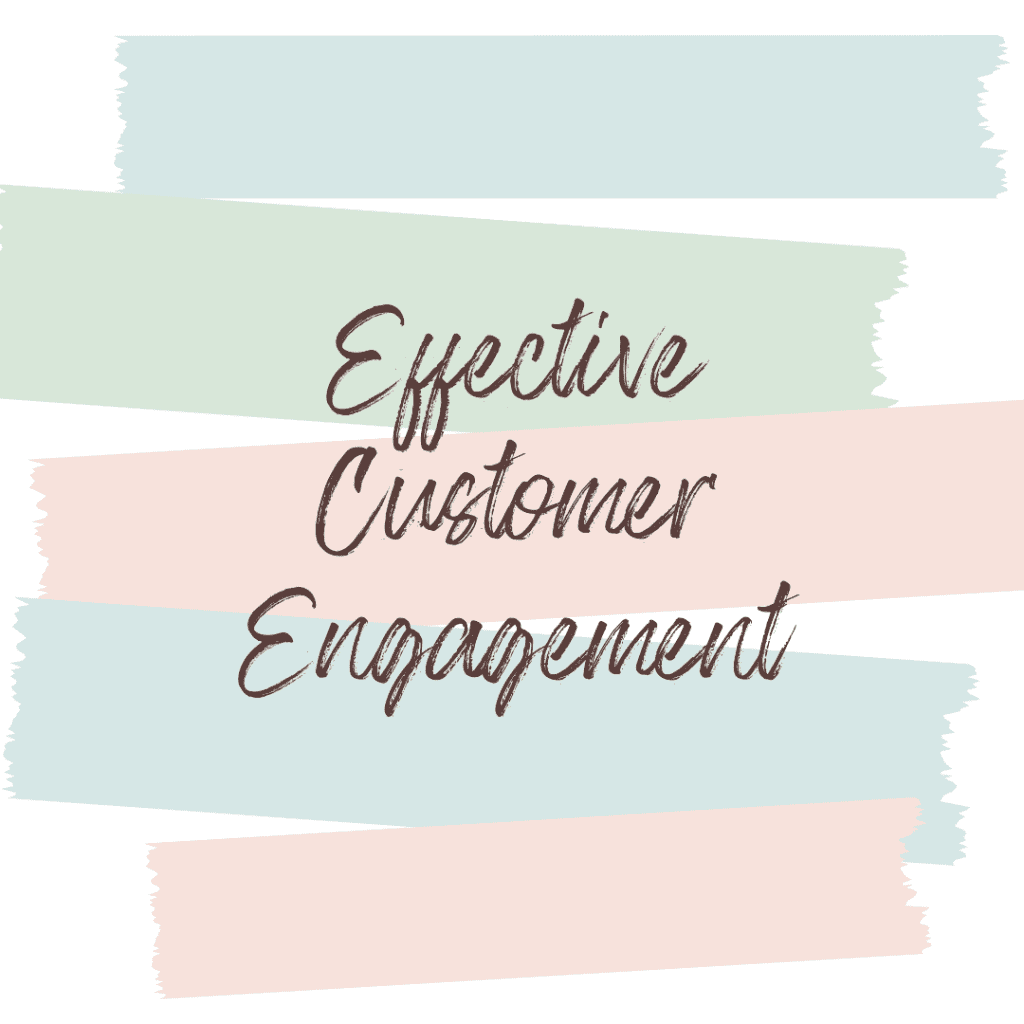Last Updated on August 30, 2024 by Val Razo
In today’s digital age, integrating Instagram with CRM systems has become essential for businesses looking to enhance customer interaction and improve customer relationships. Instagram, as one of the most popular social media platforms, offers businesses the opportunity to connect with potential customers and engage with followers on a more personal level. By leveraging CRM integration, businesses can streamline their workflows, automate customer follow-ups, and manage direct messages from Instagram directly within the CRM software. This seamless integration not only saves time but also boosts customer satisfaction by delivering exceptional customer service. In this guide, we’ll explore how to integrate Instagram with a CRM, the benefits of using Instagram CRM tools, and some practical use cases for businesses.

Understanding CRM and Instagram Integration
What is CRM Software?
CRM software (Customer Relationship Management) is a tool that helps businesses manage their customer relationships by organizing customer data, tracking interactions, and automating tasks such as follow-ups and lead generation. These systems are designed to enhance customer experiences, improve customer support, and ultimately boost customer satisfaction. By integrating social media platforms like Instagram with a CRM, businesses can manage customer interactions on Instagram more effectively, ensuring that no customer inquiries go unanswered and that each interaction is recorded and utilized to improve marketing strategies.
The Role of Instagram in Customer Interaction
Instagram is a powerful platform for engaging with potential customers and building strong customer relationships. With features like Instagram Stories, direct messages (DMs), and Instagram Business accounts, businesses can connect with their audience in real-time, answer customer inquiries, and even handle customer support. By using Instagram as part of a broader CRM strategy, businesses can automate responses, track interactions, and gather valuable analytics to better understand their audience. Integrating Instagram with a CRM system ensures that these interactions on Instagram are seamlessly incorporated into the overall customer relationship management strategy, allowing for more personalized and effective customer engagement.
Steps to Integrate Instagram with a CRM System
How to Integrate Instagram with CRM Software
Integrating Instagram with CRM software can significantly enhance customer engagement by allowing businesses to manage their Instagram interactions within their existing CRM framework. The first step is to choose a CRM platform that supports Instagram integration. Many CRM tools offer native Instagram integration, enabling businesses to connect their Instagram Business accounts directly to the CRM. Once connected, businesses can streamline their workflow by managing Instagram DMs, tracking customer interactions, and storing contact information in one place. The integration process typically involves setting up Instagram’s API within the CRM, ensuring that all direct messages on Instagram are automatically synced with the system. This seamless integration helps businesses save time and provides a more efficient way to engage with customers on Instagram.
Automating Customer Follow-Ups Using Instagram CRM Integration
One of the key benefits of Instagram CRM integration is the ability to automate customer follow-ups. With automation, businesses can set up triggers and workflows that automatically send follow-up messages after a customer interaction on Instagram. For example, after a customer sends an inquiry via Instagram DM, the CRM can be programmed to send a personalized response or follow-up message within a specific timeframe. This not only improves response time but also ensures that no customer interaction is overlooked. Additionally, businesses can use CRM analytics to track the effectiveness of these automated messages, allowing for continuous improvement in customer engagement strategies. By automating these tasks, businesses can focus on other aspects of their operations, knowing that their Instagram customer interactions are being managed efficiently.
When I first integrated Instagram with my CRM, I noticed an immediate improvement in how I managed customer interactions. Before the integration, it was challenging to keep track of Instagram DMs and ensure that each inquiry received a timely response. After setting it up, I could automate follow-ups and monitor all my Instagram interactions directly from my CRM dashboard. This not only saved me time but also helped me increase customer satisfaction by ensuring no message was missed.

Benefits of Using Instagram CRM Integration for Businesses
Enhancing Customer Interaction Through CRM Integration
Integrating Instagram with a CRM system offers numerous benefits, particularly in enhancing customer interaction. By managing all customer interactions on Instagram within a CRM platform, businesses can keep track of every message, comment, and inquiry from potential and existing customers. This centralized approach allows businesses to provide more consistent and personalized responses, leading to improved customer satisfaction. Additionally, the ability to monitor and analyze these interactions through the CRM gives businesses insights into customer behavior and preferences, enabling them to tailor their marketing campaigns and customer support efforts more effectively. Ultimately, Instagram CRM integration helps businesses build stronger, more meaningful customer relationships.
Streamlining Marketing Efforts with Instagram CRM Integration
Another significant advantage of Instagram CRM integration is the ability to streamline marketing efforts. By consolidating Instagram data with other customer data in the CRM, businesses can create more targeted and effective marketing campaigns. For instance, businesses can segment their audience based on their interactions with the brand on Instagram, allowing for more personalized marketing messages. Additionally, businesses can automate the process of sending marketing messages through Instagram based on specific customer actions or behaviors, further enhancing the efficiency of their marketing strategies. This integration also allows businesses to track the performance of their Instagram marketing efforts directly from the CRM, providing valuable analytics that can be used to refine and improve future campaigns. Overall, using Instagram CRM tools helps businesses maximize their marketing impact while reducing the time and effort required to manage these efforts.
In 2023, it was reported that 90% of Instagram users follow at least one business, making Instagram a key platform for customer engagement and brand awareness.
Use Cases of Instagram CRM Integration
Sales CRM Use Cases for Instagram Integration
Sales CRMs that integrate with Instagram provide businesses with powerful tools to enhance their sales processes. One common use case is lead generation through Instagram. By monitoring Instagram interactions such as comments, likes, and direct messages, businesses can identify potential leads and automatically add them to the CRM for follow-up. Sales teams can then track the progress of these leads through the sales pipeline, using the CRM to manage and automate communications. Another use case involves using Instagram DM for direct sales outreach. By leveraging CRM automation, businesses can send personalized direct messages to potential customers based on their interactions with the brand on Instagram, improving the chances of conversion. This integration not only increases efficiency but also allows sales teams to engage with a larger number of leads without sacrificing personalization.
I remember a time when I was running a marketing campaign on Instagram, and tracking customer engagement was a nightmare. Without the CRM integration, I had to manually pull data from Instagram and then upload it into the CRM, which was time-consuming and prone to errors. Once I integrated Instagram with my CRM, all the data flowed seamlessly, allowing me to analyze customer interactions and adjust my campaign in real time. This played a crucial role in improving the effectiveness of my marketing strategies.

Examples of Instagram CRM Use for Businesses
Businesses across various industries are leveraging Instagram CRM integration to improve their customer engagement and sales efforts. For example, e-commerce companies can use Instagram to showcase their products, engage with customers through comments and direct messages, and then seamlessly transfer these interactions to their CRM for follow-up. This ensures that every customer inquiry or interest is captured and acted upon, leading to higher conversion rates. Service-based businesses can use Instagram to book appointments or consultations directly through Instagram DMs, with the CRM automatically scheduling and sending reminders to customers. Additionally, businesses can use the integration to track customer preferences and behaviors on Instagram, allowing them to tailor their services and offerings to better meet customer needs. These use cases demonstrate the versatility and value of integrating Instagram with a CRM system for businesses looking to enhance their customer engagement and drive growth.
Choosing the Right CRM with Instagram Integration
Key Features to Look for in Instagram CRMs
When selecting a CRM with Instagram integration, it’s essential to consider key features that will best support your business’s needs. First, look for CRM tools that offer native Instagram integration, allowing for seamless one of your Instagram Business Account with the CRM. This ensures that all interactions on Instagram, such as direct messages, comments, and likes, are automatically captured within the CRM platform. Another critical feature is automation capabilities, which can help automate follow-ups and marketing efforts based on Instagram interactions. Additionally, the CRM should provide robust analytics and reporting tools, allowing you to track the performance of your Instagram marketing efforts and customer interactions. Look for platforms that support integration with other social media channels as well, providing a comprehensive view of your social media engagement across multiple platforms. Finally, ensure that the CRM is user-friendly and customizable to suit your business’s specific needs, allowing for easy management of your customer relationships and marketing campaigns.
In 2023, a popular e-commerce brand, “Fashion Nova,” leveraged Instagram CRM integration to enhance their customer support and marketing efforts. By integrating their Instagram account with a CRM, they were able to manage over 50,000 direct messages per month more efficiently. This allowed them to automate responses to common customer inquiries and track customer preferences, which significantly improved their marketing campaign targeting. As a result, they experienced a 35% increase in sales conversions during their peak promotional periods.
Top CRMs with Instagram Integration for Businesses
Several CRMs stand out when it comes to Instagram integration, each offering unique features to help businesses engage with customers effectively. Salesforce, for example, provides powerful social media integration tools that allow businesses to manage Instagram interactions alongside other customer data within the platform. HubSpot is another popular option, offering comprehensive CRM tools with Instagram integration that includes advanced automation and analytics capabilities. Zoho CRM is known for its affordability and ease of use, making it a great choice for small to medium-sized businesses looking to integrate Instagram with their CRM. Pipedrive also offers seamless Instagram integration, focusing on enhancing the sales process by capturing leads directly from Instagram and managing them within the CRM. These CRMs provide businesses with the tools they need to optimize their Instagram marketing and customer engagement strategies, ultimately driving better results and customer satisfaction.
A survey conducted in 2023 found that businesses using CRM systems integrated with social media platforms like Instagram saw a 27% increase in customer retention rates.

Conclusion
Integrating Instagram with a CRM system is a powerful strategy for businesses aiming to enhance their customer engagement and streamline their customer relationship management efforts. By using a CRM that offers seamless integration with Instagram, businesses can automate follow-ups, track customer interactions, and gain valuable insights through analytics. This integration not only improves response time and customer satisfaction but also allows businesses to better tailor their marketing campaigns and support services to meet the specific needs of their customers. Whether you’re looking to boost sales, improve customer support, or simply enhance your overall customer experience, integrating Instagram with your CRM is a step toward achieving these goals. With the right tools and strategies in place, businesses can leverage Instagram to build stronger, more meaningful relationships with their customers and drive long-term success.
Frequently Asked Questions
What are the advantages of using a CRM to manage Instagram direct messages?
Managing Instagram direct messages through a CRM offers several advantages, including automation of responses, centralized management of customer inquiries, and better tracking of customer interactions. By integrating Instagram DMs with a CRM, businesses can ensure that all customer communications are streamlined, personalized, and efficiently handled, leading to improved customer satisfaction and quicker response times.
How can businesses use Instagram CRM tools for lead generation?
Instagram CRM tools can help businesses with lead generation by capturing and organizing leads from Instagram interactions such as likes, comments, and DMs. These leads can then be nurtured through automated follow-ups and personalized marketing campaigns within the CRM. By using a CRM to manage these leads, businesses can increase conversion rates and streamline their sales process.
What features should I look for in an Instagram CRM tool?
When selecting an Instagram CRM tool, look for features like Instagram DM API integration, automation capabilities, and robust analytics. Additionally, the CRM should allow for easy management of Instagram profiles and interactions, providing a seamless way to track and engage with Instagram users. A good Instagram CRM tool should also integrate with other marketing channels, offering a comprehensive solution for customer relationship management.
How can Instagram CRM integration improve customer support?
Instagram CRM integration improves customer support by allowing businesses to manage all customer inquiries from Instagram within a centralized platform. This ensures that no inquiry is missed and enables businesses to respond more quickly and efficiently. Automated workflows can be set up to handle common questions, freeing up time for customer service teams to focus on more complex issues.
FAQ 5: What should businesses know about the Instagram DM API for CRM integration?
Businesses should know that the Instagram DM API allows CRMs to access and manage Instagram direct messages within the CRM system. This integration is crucial for automating customer follow-ups, tracking conversations, and ensuring a seamless customer experience. Understanding how to use the Instagram DM API within a CRM can help businesses better manage their social media interactions and improve overall customer engagement.
Author Bio
Val Razo
Val Razo is a skilled professional in the field of Instagram Marketing. With over five years of experience as a freelance Social Media Marketing consultant, Val has assisted numerous small and medium-sized businesses in achieving their goals.
